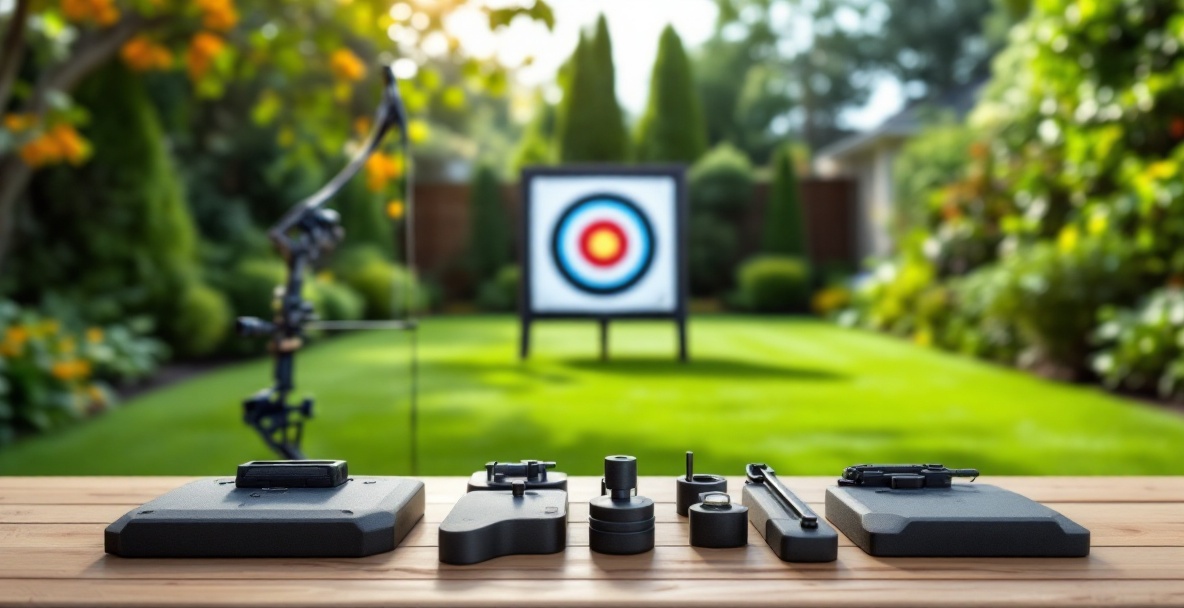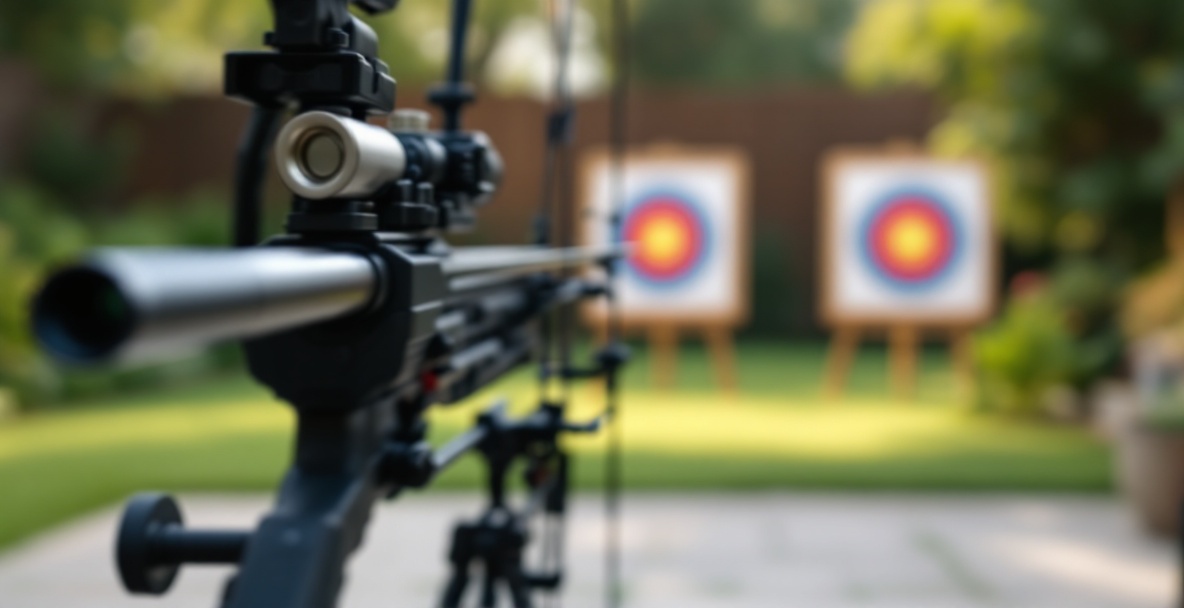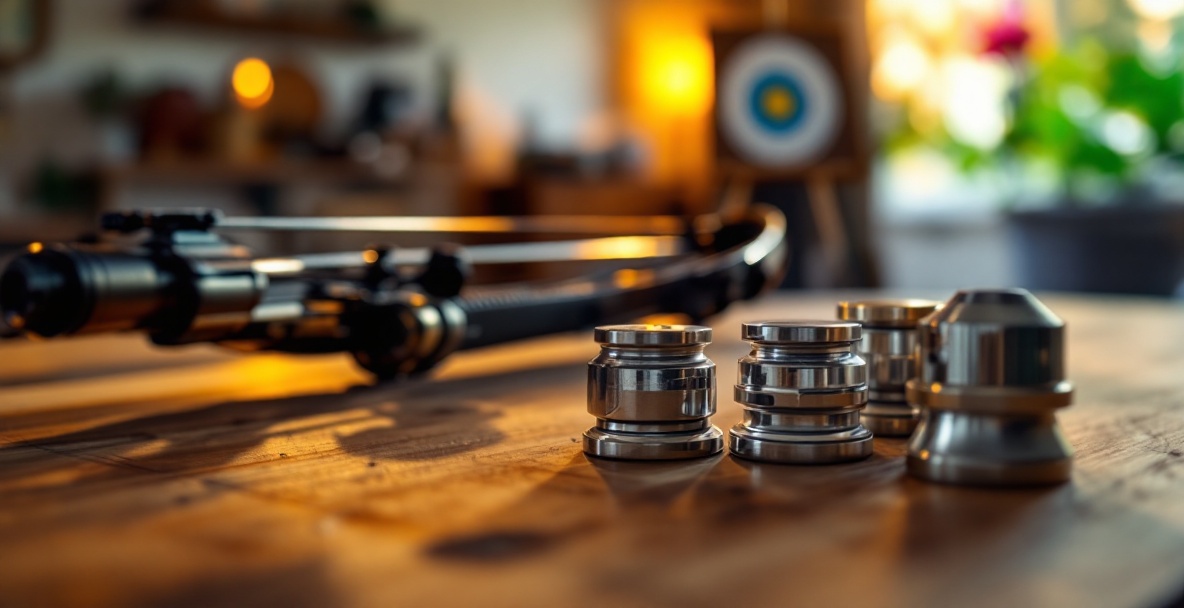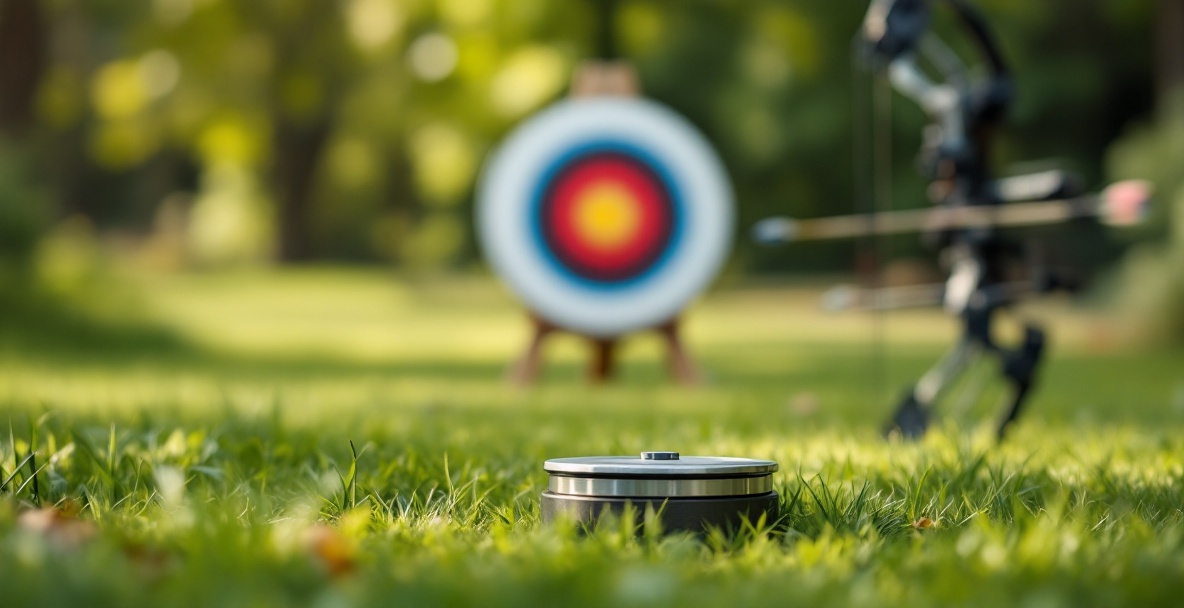Step Into Your Own Backyard Archery Journey

Picture stepping out your back door with your bow in hand and feeling excited to practice whenever the mood strikes. Building a home archery range turns your yard into a personal training zone where you can work on your shot and refine your technique at your own pace. Having your own range can boost your skills because you can practice more often and see improvement sooner. How do you set this up safely and without spending a fortune? Let’s dive into creating a spot that works for you while protecting your safety and style.
“With your own archery range at home, your yard turns into a personal training zone where you can work on your form anytime.”
| Aspect | Your Home Archery Range | Public/Club Range |
|---|---|---|
| Accessibility | Practice whenever you feel like it | Set hours only |
| Cost Over Time | One-time setup fee; no recurring range fees | Ongoing membership or lane fees |
| Privacy | A personal, pressure-free space | Shared setting with distractions |
| Travel | No commute required – simply step outside | Driving time and extra fuel |
| Customization | Fully adaptable for gear trials, like stackable stabilizer weights | Fixed setup with few tweaks |
Why Choose Archery at Home?
There is nothing like the freedom of practicing archery at home. You won’t have to pack up your gear, drive to a crowded range, or work around set hours. When you create your personal practice space, you decide if you want a quick 15-minute session before work or an evening shoot while the sun goes down. This kind of easy access means you can practice more and get better faster.
Your own range gives you a chill atmosphere made just for you. With no one watching your every move, you can concentrate on your form and try out new equipment adjustments for maximum comfort. Many archers using our precision-engineered stabilizer weights have discovered that a private space lets them fine-tune their balance and really feel the impact of every tweak. Regular practice in your own backyard helps you master your shot regardless of the weather or schedule conflicts. Practice in different conditions also teaches you how your gear, like weather-resistant archery equipment, performs over time.
A personal range packs incredible value over time. Although you invest a little upfront with safety gear and targets, you quickly save on range fees and travel costs. More than that, you’re creating a space that grows with your skills. Whether you’re working on enhancing your accuracy or trying out different stabilizer setups, your backyard becomes the workshop where your archery skills truly come alive.
Crafting Your Perfect Archery Spot

Turning part of your home or backyard into a real archery range calls for some smart planning. Whether you’re just having fun on weekends or honing your technique with OneX Archery stabilizer weights, start with good preparation. Think about space, safety, and lighting to build a range that is fun, secure, and built to last.
Safety Comes First!
Before you set up your own range, safety has to be the top priority. Check your available shooting distance-you want at least 20 yards for compound bows and 10-15 yards for recurves. Remember, safety isn’t just about the shooting lane; there should be enough room all around to keep everyone out of harm’s way.
“A strong backstop is a must for your home range.”
| Backstop Material | Stopping Power | Durability | Typical Cost | Best For |
|---|---|---|---|---|
| Commercial Archery Netting | High up to 300 fps | 3-5 years outdoors | $$$ | Frequent shooters looking for pro-level safety |
| Compressed Foam Blocks | Medium-High | 2-3 years outdoors | $$ | DIYers who want something portable |
| Horse Stall Mats | Medium | 5+ years | $$ | Budget setups indoors or in covered areas |
| Hay/Straw Bales | Low-Medium | Less than 1 year | $ | Temporary setups or beginner practice |
Never skip on a solid backstop. We recommend choosing a quality archery backstop or building one using compressed foam blocks with a heavy-duty tarp covering. The backstop should extend at least two feet past your target on every side and be sturdy enough to stop any stray arrows. Many archers find that a well-built backstop boosts practice efficiency and cuts down on arrow damage.
Set up clear safety rules, especially if others share your range. Mark your shooting line with clear markers, use a simple “cease fire” call when needed, and keep onlookers safely behind the line. For more detailed rules, check out the Archery Trade Association’s seven essential safety tips. If you have the room, adding side barriers boosts safety even more. Always have arm guards and finger tabs ready, even in your own space.
Choosing Your Ideal Spot
Finding the best spot for your range means thinking about a few things. For an outdoor setup, look for a level patch with plenty of natural light that isn’t directly facing the early sun or late afternoon glare. Your space should have a solid backdrop-like a fence, wall, or hill-behind your target. For indoor ranges, ensure you have high ceilings (at least 8-9 feet) and enough width to comfortably pull your bow.
Good lighting makes a big difference. Indoors, bright, steady lights help eliminate shadows on your target, while outdoors pick a spot that avoids direct sunlight in your shooting line. Proper lighting can boost your accuracy and make longer sessions easier on your eyes. Weather matters too. Choose an area that is shielded from strong winds so you can see how your arrow really flies. If you are using OneX Archery stabilizer weights, you want conditions that let you feel their benefits. Consider a semi-permanent setup with durable equipment that stands up to varying conditions.
Stocking Up on Equipment
Now comes the fun part – getting your range ready with the right gear. After you’ve planned your space, it’s time to fill it with the equipment that makes every practice session rewarding. Whether you’re a newbie or already know your way around archery, the right gear creates a smoother, more enjoyable experience.
Essential Gear to Get Started
Every archer starts with the basics. First, choose a bow that suits your style and skill level. Beginners often start with a simple recurve bow that has a draw weight of about 15-25 pounds. Compound bows give an added mechanical edge, but they need more upkeep. It’s important to use arrows that match your draw weight and length so that your shots fly straight and true. We suggest having at least 6-12 arrows handy so you can keep practicing without constant breaks. Beginners usually lean toward aluminum arrows for their toughness and price, while carbon arrows offer great consistency for those looking to take their accuracy to the next level.
“Matching your arrows’ stiffness with your draw weight and length is key to keeping your shots straight.”
| Arrow Material | Weight (grains/in) | Durability | Cost per Dozen | Ideal User |
|---|---|---|---|---|
| Aluminum | Light–Medium (≈ 8-11) | Bend-resistant but can dent | $$ | Beginners looking for affordability |
| Carbon | Light (≈ 6-9) | Excellent impact resilience | $$$ | Intermediate or advanced archers aiming for consistency |
| Wood | Varies | Low (warps easily) | $ | Those who love traditional or longbow styles |
| Hybrid (Aluminum-Carbon) | Medium (≈ 7-10) | High | $$$$ | Competitive shooters needing straight flight |
Choosing the right target is just as important as selecting your bow and arrows. Foam block targets work wonderfully for beginners since they stop arrows effectively and let you retrieve them easily. Bag targets offer a similar advantage with a different feel. As you set up your backyard practice area, don’t forget to add safety gear like an arm guard to protect against string slap and a finger tab or glove to ease finger strain and help with a smooth release. For more on safety equipment, check out Brotherhood Mutual’s archery safety recommendations. A sturdy target stand and reliable backstop net go a long way in keeping things safe and organized.
Upgrading Your Gear Options
Once you get comfortable, think about adding specialized gear that really makes a difference. Upgrading with stabilizers can change your shooting game because they help keep your bow steady and boost your accuracy. OneX Archery offers stabilizer weights that let you fine-tune your balance perfectly with a stackable stainless steel design. Adding a sight system is another way to gain precision. While some archers prefer shooting by instinct, many opt for fixed-pin or adjustable sights paired with a quality release aid. If you’re serious about enhancing your archery performance, consider a pressure button to help fine-tune your arrow’s flight.
Also, remember the impact of weather on your gear. For outdoor ranges, weather-resistant equipment is essential. Our stainless steel weights offer superior corrosion resistance and perform well even in humidity or light rain. Look into weather-resistant target options and ensure you have the right storage to protect your gear between sessions.
Bringing Your Range to Life

Now that you have a plan and your gear is ready, it’s time to set up your own range. This is where your vision turns into action and every thoughtful detail shows off as you practice. At OneX Archery, we’ve seen that a well-organized space boosts an archer’s form and ensures steady improvement. Let’s look at how to build a range that is safe, enjoyable, and built to help you perform at your best.
“Set your stand so that the target’s center lines up with your shoulder. It really helps with your form and accuracy.”
Building Your Target Stand
A solid target stand is the base of every good range. The great news is that you don’t have to spend a lot to build one. Gather some basic materials from your garage: two pieces of 2×4 lumber (around 6 feet long), one 4×4 post (about 3 feet long), and some exterior screws. Arrange these in an “H” shape by attaching the 4×4 between the two 2×4s, leaving about 18 inches of the 2×4s hanging down to act as legs. This simple setup makes a steady base that you can shove into soft ground for extra stability. If your range is on a hard surface, adding extra lumber in an “X” shape helps widen the base.
Make sure your stand is tall enough so that the center of your target sits at your shoulder level. This adjustment makes a big difference in shooting form and accuracy. For extra protection, you can attach carpet remnants behind your target to catch any stray arrows. This small improvement often lengthens your target’s life and cuts down on arrow damage, something our OneX Archery community values highly.
Organizing Your Range Layout
A tidy layout makes your range both safer and more efficient. Start by setting your target stand against your backstop, ensuring nothing delicate is behind it that could get hit by stray arrows. Mark your shooting line clearly using spray paint, garden stakes with bright ribbons, or even by laying a garden hose along the ground. If you’re a beginner, set standard distances like 10, 15, and 20 yards, and add longer markers as you improve. These reference points build muscle memory and let you track your progress. The Outdoor Alabama archery safety guidelines suggest using clear shooting lines that everyone on the range understands.
Set up a gear zone off to one side of your shooting area where you can keep your bow, arrows, and other accessories safe. This keeps your valuable equipment organized and shields it from the weather. It’s especially important if you’re working with advanced gear like OneX Archery stabilizer weights. Many archers even add a small bench or chair nearby, giving them a comfy spot to sit for gear tweaks during long practice sessions.
Making It Enjoyable

Setting up your own archery range is just the first step; the real excitement starts when you use it often. Keeping your practice sessions fun is key to long-term improvement. At OneX Archery, we know that even dedicated archers need to spice things up sometimes to avoid falling into a boring routine. Here are some suggestions to keep your backyard sessions exciting while you get better shot after shot.
Creative Practice Ideas
While traditional target shooting is a classic workout, mixing up your routine can keep things fresh and help you build new skills. For example, try hanging balloon targets at different distances. The pop when you hit a balloon gives instant, fun feedback. As your skills grow, challenge yourself with smaller balloons. Many archers using OneX Archery stabilizer weights say that these fun games help keep their practice light and engaging while still honing their accuracy.
You can even create your own version of archery golf by setting up a course around your range, with each target acting as a “hole.” Assign a par score based on the difficulty of each shot and keep score like a round of golf. This game is not only fun but also sharpens your distance judgment. Timed challenges are another great idea – set a 60-second timer and count how many accurate shots you can take. This builds both skill and confidence. Invite friends or family to join in since a bit of friendly competition always drives you to do better.
Keeping Track of Your Improvement
Keeping an archery journal can make your practice more focused. Write down the date, weather, your gear settings (like which OneX Archery weights you used), and your scores. Over time, you’ll start recognizing patterns and learn what setups give you your best target groupings. Some archers are amazed at how small changes in their stabilizer setup can lead to big improvements.
Even during casual sessions, a scoring system can help you see progress. You might use the standard 10-ring scoring or develop your own system for your backyard targets. Snap a photo of your target face after a round and check back monthly to see how your groupings change. Modern smartphone apps let you log scores, take photos, and even analyze your form, which can complement your traditional methods. Remember, the purpose of tracking is to give you clues on how to improve, not to judge you.
Wrapping Up and Getting Ready to Shoot
Creating your own archery range is a major step toward better shooting. As we’ve covered, building a personal range is all about smart planning, safety, and making sure you have fun along the way. Now that your space is ready, you can focus on improving your form and technique whenever you want. Before you take that first arrow, here’s a quick run-through of the essentials and ideas to keep growing your skills.
Your Final Checklist
Before you start your first practice session, double-check these key points. First, look over your safety zone – make sure your shooting area is clear and your backstop extends well beyond your target. Confirm that your shooting line markers are visible and measured correctly. Next, inspect your targets for solid mounting so they won’t tip over during practice. Keep your gear organized and safely stored, and take a moment to review your local regulations to stay on the right side of the law.
Lastly, check your bow setup, including the stabilizer system. Ensure that your stabilizer weights are securely attached before every session. This quick check helps maintain the balance of your bow and prevents any surprises during your shot. A well-balanced bow is a big help in improving your shooting accuracy.
What’s Next and More Resources
Now that your range is up and running, think about joining archery forums and social media groups. These communities offer ideas, troubleshooting tips, and the motivation you need to keep moving forward. Many archers find that sharing their progress builds accountability and keeps the fun alive. Local clubs might even invite you for group sessions or competitions, giving you a chance to test your skills in new settings.
To keep getting better, explore training programs or video tutorials focused on refining your form. Many expert archers share tips to improve your technique online. As you grow, try customizing your gear to match your style perfectly. Learning about vibration dampening can also help elevate your performance.
Weather can change quickly, so invest in weather-resistant archery equipment that stands up to the elements. Our stainless steel weights at OneX Archery are designed to resist corrosion, making them perfect for outdoor practice all year round. And don’t forget to keep a practice journal to track your improvements in form, consistency, and accuracy in your very own backyard range.
Ready to take your home archery range to the next level? Visit OneX Archery today to explore our precision-engineered stabilizer weights that will enhance your accuracy and create a smoother, more rewarding shooting experience. Your perfect shot begins with perfect balance!
Leave a Reply